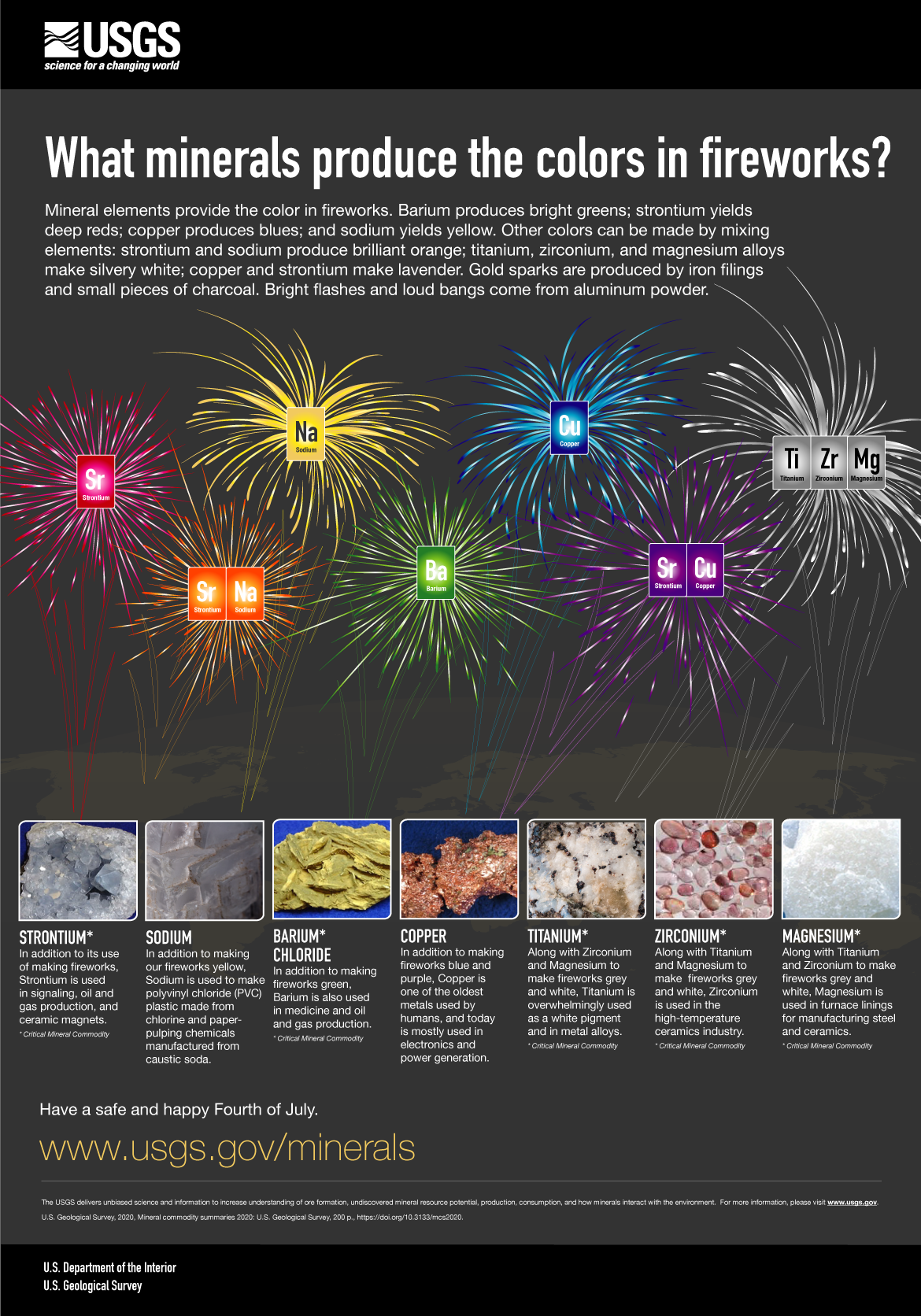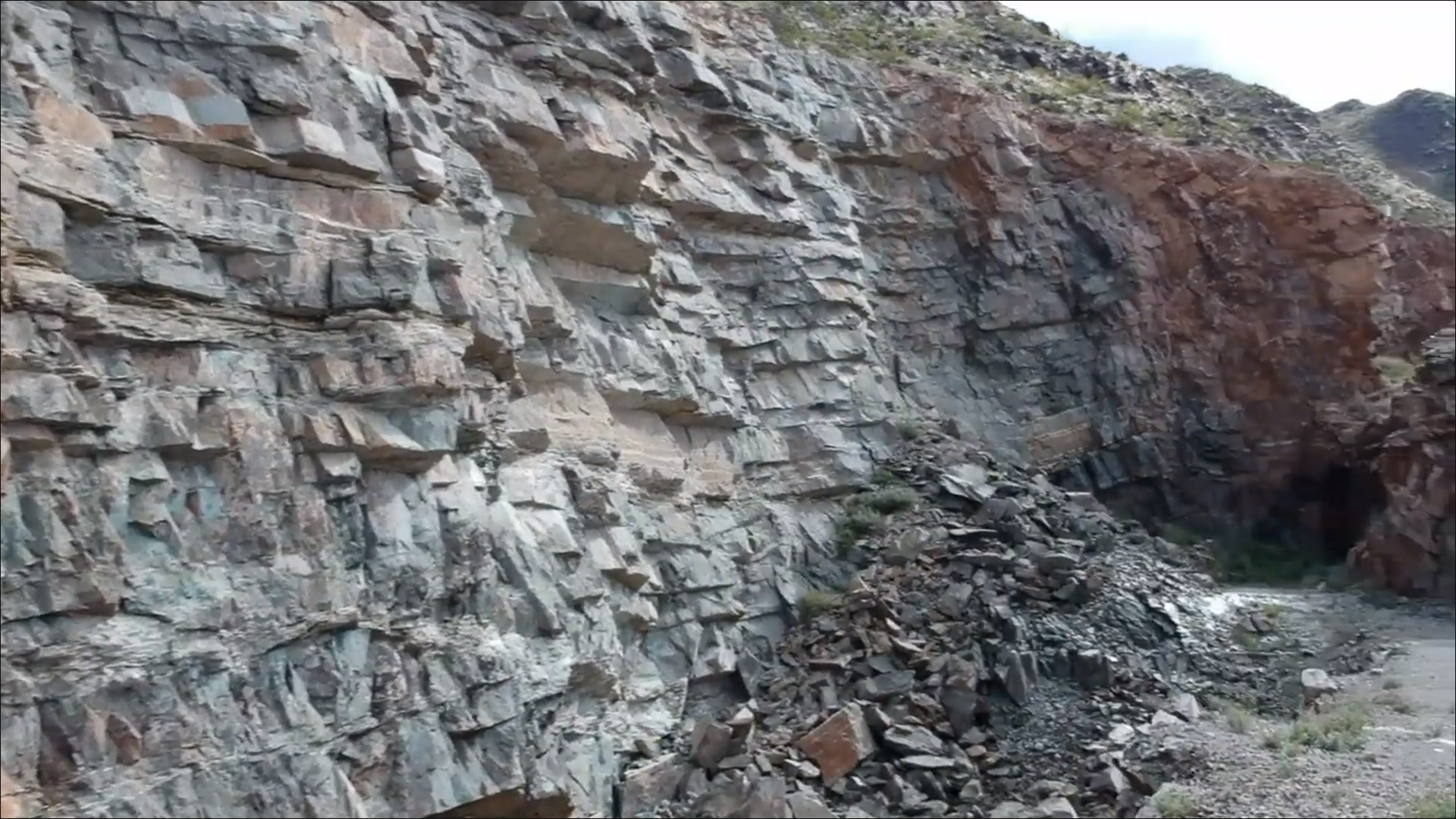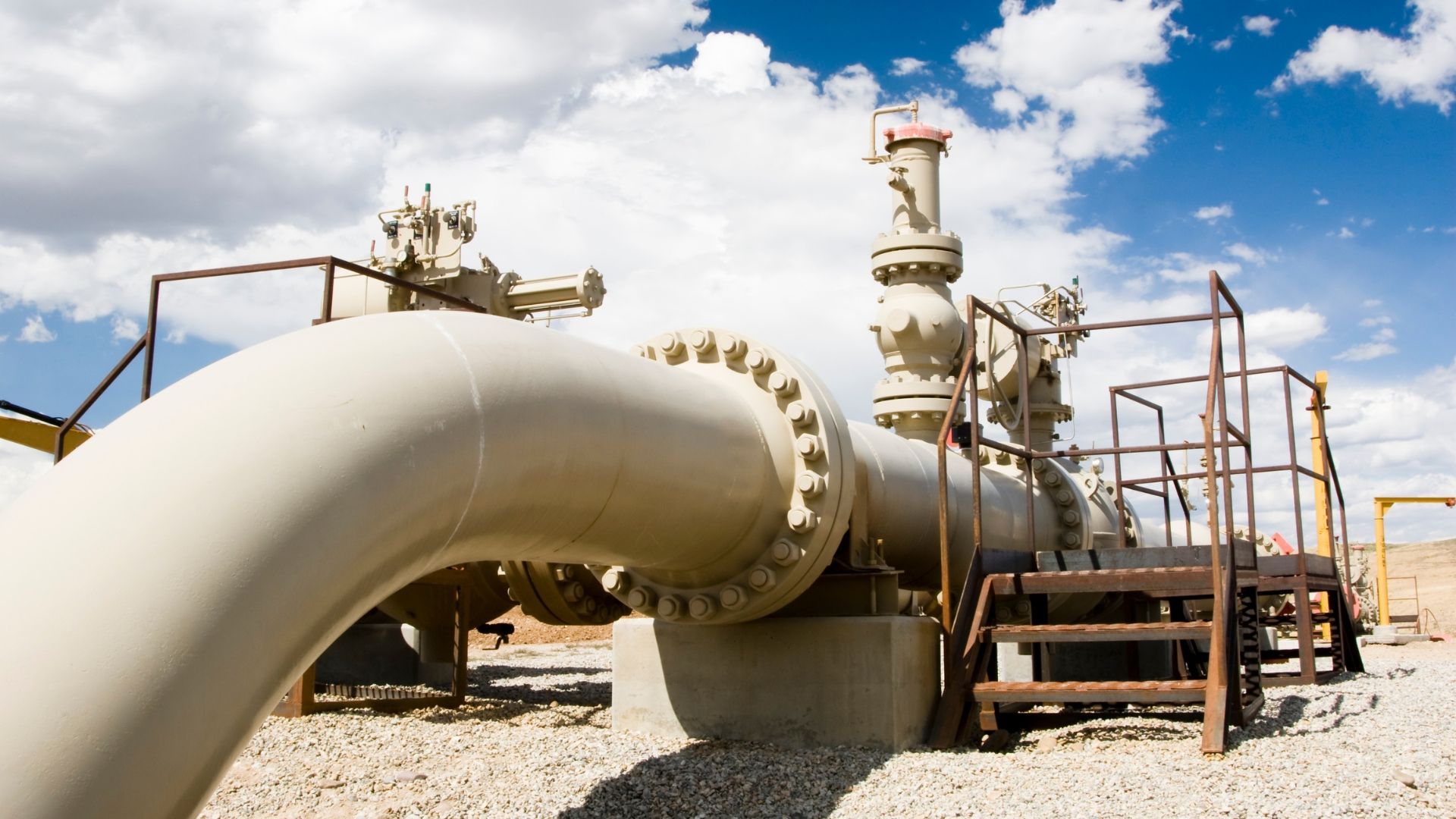
Detailed Description
Mineral elements provide the color in fireworks. Barium produces bright greens; strontium yields deep reds; copper produces blues; and sodium yields yellow. Other colors can be made by mixing elements: strontium and sodium produce brilliant orange; titanium, zirconium, and magnesium alloys make silvery white; copper and strontium make lavender. Gold sparks are produced by iron filings and small pieces of charcoal. Bright flashes and loud bangs come from aluminum powder.
Red: Sr - Strontium
Orange: Sr - Strontium, Na - Sodium
Yellow: Na - Sodium
Green: Ba - Barium
Blue: Cu - Copper
Purple: Sr - Strontium, Cu - Copper
Greys and White: Ti - Titanium, Zr - Zirconium, Mg - Magnesium
STRONTIUM*
In addition to its use of making fireworks, Strontium is used in signaling, oil and gas production, and ceramic magnets.
* Critical Mineral Commodity
SODIUM
In addition to making our fireworks yellow, Sodium is used to make polyvinyl chloride (PVC) plastic made from chlorine and paper-pulping chemicals manufactured from caustic soda.
BARIUM* CHLORIDE
In addition to making fireworks green, Barium is also used in medicine and oil and gas production.
* Critical Mineral Commodity
COPPER
In addition to making fireworks blue and purple, Copper is one of the oldest metals used by humans, and today is mostly used in electronics and power generation.
TITANIUM*
Along with Zirconium and Magnesium to make fireworks grey and white, Titanium is overwhelmingly used as a white pigment and in metal alloys.
* Critical Mineral Commodity
ZIRCONIUM*
Along with Titanium and Magnesium to make fireworks grey and white, Zirconium is used in the high-temperature ceramics industry.
* Critical Mineral Commodity
MAGNESIUM*
Along with Titanium and Zirconium to make fireworks grey and white, Magnesium is used in furnace linings for manufacturing steel and ceramics.
* Critical Mineral Commodity
Copyright © 2023 U.S. Department of the Interior | U.S. Geological Survey







